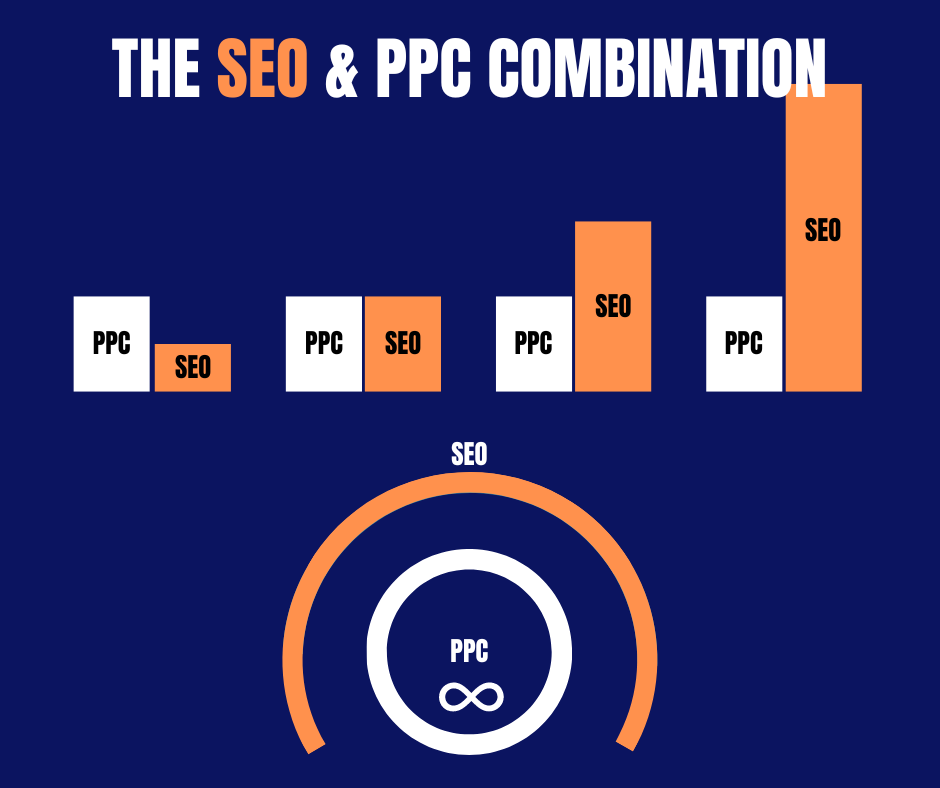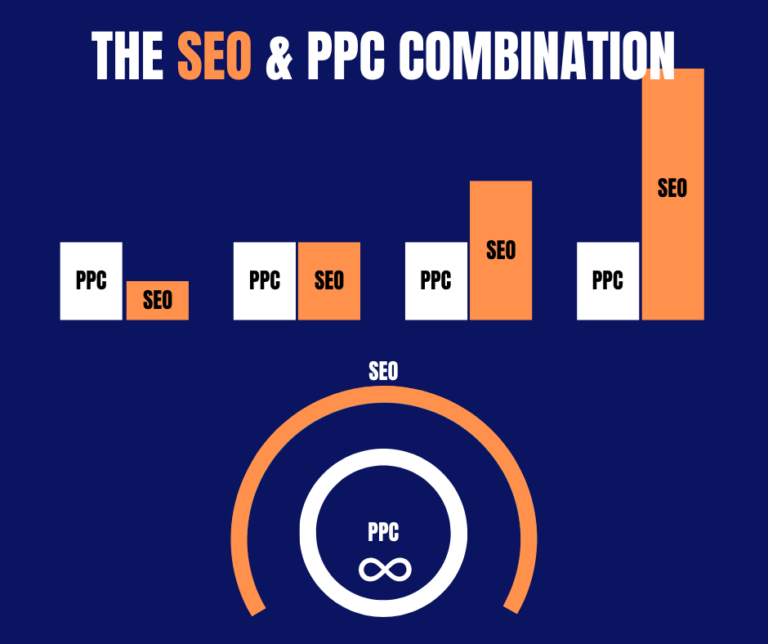Being a Search specialist marketing agency, we get asked one question a lot more than others: Should I prioritise SEO or PPC? This question came up recently during a consultation with a potential client who is preparing for the exciting journey of starting a new business. With a tight budget and the need for immediate results, it’s a challenge that many entrepreneurs face.
After a careful evaluation of their business needs and cash flow, we arrived at a tried-and-true strategy: a synergistic approach that combines both Pay-Per-Click (PPC) advertising and Search Engine Optimisation (SEO).
Using the same budget, paying for keyword performance until SEO catches up and then moving the spend, this simple strategy is a great way to really capitalise on Search without adjusting spend more than is needed.

1. Start with PPC for Immediate Results
For new businesses, immediate visibility can be critical. PPC is an excellent way to generate quick traffic and revenue. By investing in paid search ads, you can start appearing in front of potential customers right away.
PPC allows for rapid testing of keywords and audience segments and generates ROI within a few weeks. Platforms like Google Ads enable businesses to gather valuable data on which keywords drive the most conversions, which demographics engage with your ads, and how well your offers resonate with your target market.
As famous marketer Neil Patel points out, PPC provides the flexibility to experiment and optimise your campaigns in real time, making it a vital tool for businesses just starting out.
2. Build Your SEO Strategy Simultaneously
While PPC is driving immediate traffic, it’s essential not to neglect SEO. At this stage, really make sure you invest in optimising your site for the same keywords you are targeting with your PPC campaigns. SEO may take longer to yield results, but the long-term benefits are free and permanent with proper care.
A solid SEO strategy helps establish your brand’s authority and credibility over time, and by creating high-quality content and improving your website’s user experience (UX), you can enhance your organic rankings, catching up to your PPC performance.
3. Shift Your Focus as SEO Grows
Once your SEO performance begins to match or surpass your PPC results, it’s time to shift your PPC budget strategically. Focus on new keywords, geographical areas, or audience segments that haven’t been tapped yet. This keeps your campaigns fresh and allows you to expand your reach.
Expanding your PPC efforts not only supports your growing organic visibility but also reinforces your brand’s presence in the marketplace. According to a study by Google, businesses that invest in both SEO and PPC tend to see improved performance across the board, as these strategies complement and amplify each other.
Even better still, you now have a boatload of data to use when targeting these new business areas too, using what you already know works to turbocharge your performance and give the results that you need to thrive.
4. Repeat the Cycle of Optimisation
Digital marketing is an ongoing process, and the journey doesn’t stop once you’ve established a successful initial strategy. Continue optimising both your PPC and SEO efforts, fine-tuning your approach based on the data you collect.
Maintain the same PPC budget for a while, focusing on refining your campaigns and exploring new opportunities. As your organic traffic increases and your SEO becomes more robust, you can gradually increase your PPC budget if and when you’re ready to scale it, having SEO supporting you across all the previous work done and giving you a compounding ROI. Awesome.
Summary: A Balanced Approach
Choosing between SEO and PPC can be a tough decision, especially for new businesses with limited budgets, but it really is the combined approach of starting with PPC to drive immediate revenue while building a solid SEO foundation that makes the strategic move that many businesses can benefit from.
This 1-2 combination helps with immediate cash flow but also sets the stage for sustainable growth you can scale however you see fit. As your business evolves, continuing to optimise and expand both channels will ensure you’re well-positioned in the competitive digital landscape. It may not be the easiest choice, but it’s certainly a smart one!

